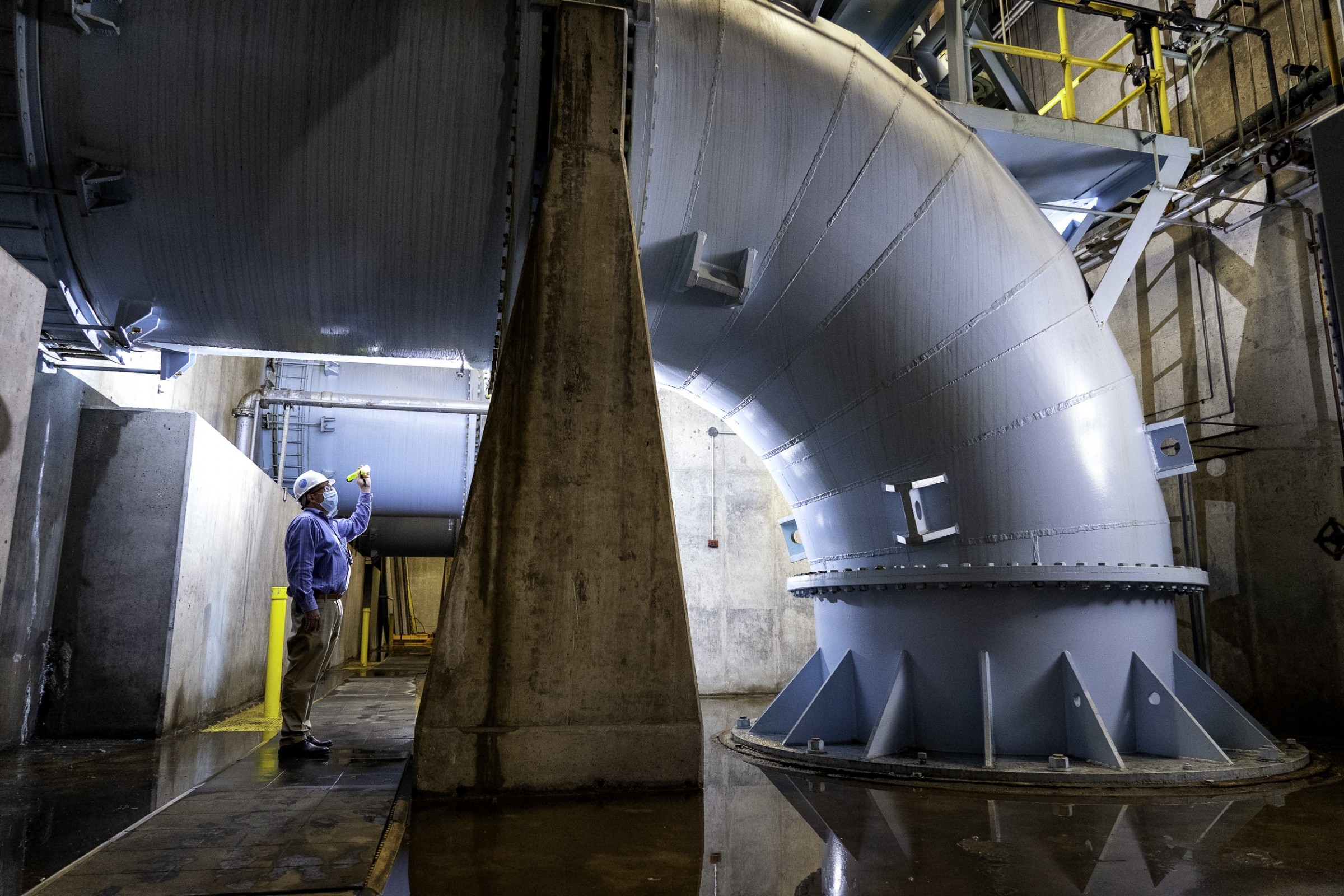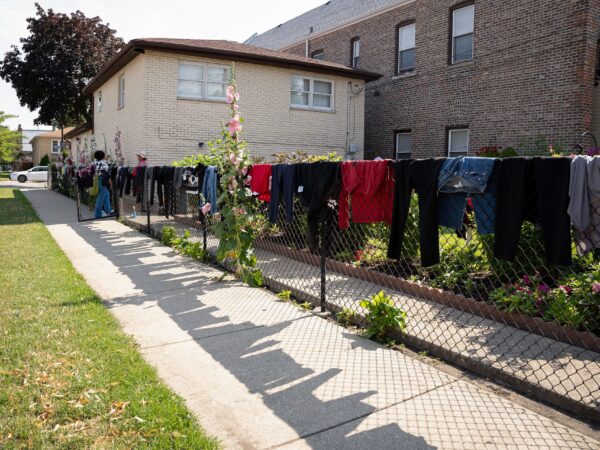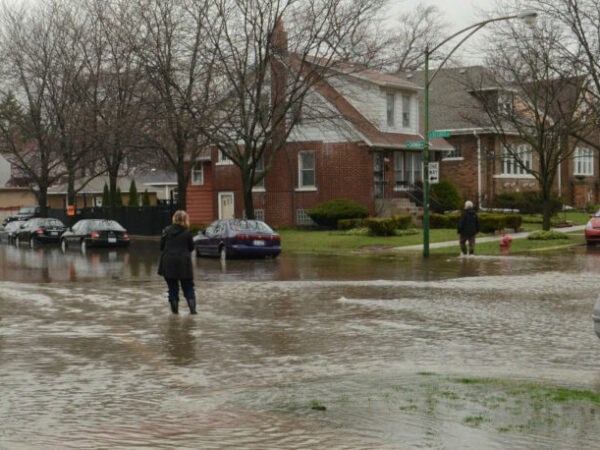
By Brett Walton, Circle of Blue
The Great Lakes News Collaborative includes Bridge Michigan; Circle of Blue; Great Lakes Now at Detroit Public Television; and Michigan Radio, Michigan’s NPR News Leader; who work together to bring audiences news and information about the impact of climate change, pollution, and aging infrastructure on the Great Lakes and drinking water. This independent journalism is supported by the Charles Stewart Mott Foundation.
President Joe Biden has made his priorities clear: subduing the pandemic, economic recovery, climate action, and racial equity.
He reiterated those national challenges once again on the Wednesday following his swearing-in ceremony at the U.S. Capitol.
“We will be judged, you and I, for how we resolve the cascading crises of our era,” Biden said in his inaugural speech, after naming each of the four priorities.
Now comes the hard part — converting rhetoric into policy and policy into practice.
Climate has received top-billing within the president’s environmental agenda, but water infrastructure and water systems could also see their status lifted. Some observers are hopeful that the new administration and the Democratic Congress will uncork federal water spending that has been steady but flat in recent years. Before the inauguration, a coalition of more than 200 western irrigation districts and farming groups asked the incoming administration to prioritize water storage, conservation, habitat restoration, reuse, and expanded financing options for water infrastructure.
But others, wary of unfulfilled promises, are more cautious in their pronouncements about a big infrastructure package that would increase federal water spending several times over.
“At the beginning of any administration, I think it’s a no-brainer, but they usually don’t,” Martin Doyle, director of the water policy program at Duke University’s Nicholas School of the Environment, told Circle of Blue. “I expect to be disappointed.”
Congress, however, will have an opportunity to surprise.
In a call to action, Biden put forward a $2 trillion climate plan that mentions a bucketful of spending options to shore up America’s built and natural infrastructure: drinking water systems, sewage treatment, wetlands restoration, levee repairs, irrigation improvements, flood protection, and cleanup of abandoned oil and gas wells.
Biden pledged that disadvantaged communities — those that are predominantly low-income and communities of color with heavy pollution burdens — would receive 40 percent of the benefits of this spending.
Therein lies one of the tricky policy questions that the administration must address, Doyle said. How will the agencies define equity and justice? And how will those definitions steer funding to specific projects and communities?
“You have to come up with scoring criteria to ensure that injustice and inequity are being addressed,” explained Doyle, who worked on budget scoring when he was a fellow at the Interior Department during the Obama administration.
One of Biden’s first actions on Wednesday was to direct the Office of Management and Budget to conduct a study on how to assess equity as it applies to agency actions. Agencies, in turn, will conduct their own equity evaluations. A working group was tasked with combing through federal datasets to build the informational foundation to support the initiative.
Besides the promise of infrastructure investment, there are immediate water needs related to the Covid-19 pandemic.
Biden’s $1.9 trillion Covid-relief proposal includes $5 billion to cover water and energy bill arrears and $20 billion for tribal governments — money that could be used to provide running water to homes without it. Congress already appropriated $638 million for overdue water bills.
Nathan Ohle, chief executive officer of Rural Community Assistance Partnership, said that those overdue bills are hurting utilities financially as well, particularly smaller utilities that may have fewer cash reserves to buffer a revenue downturn.
Because utilities are delaying repairs and capital projects during the emergency, federal aid to utilities and their customers could relieve financial burdens today while preserving the capacity to deliver water in the future.
“It’s an opportunity to ensure that utilities can be sustainable,” Ohle told Circle of Blue.
Both Ohle and Doyle said that federal financing programs like the state revolving funds could be used as leverage for structural changes within the water sector. The state revolving funds, which receive about $2.5 billion annually in appropriations, facilitate low-interest loans for water, sewer, and green stormwater projects. Last year, House Democrats proposed boosting the revolving funds by $62.9 billion over five years as part of their Moving Forward package. Along with U.S. Department of Agriculture grants and loans, the funds are the primary federal funding source for water infrastructure.
One of the biggest structural hurdles is the array of community water systems, which number around 50,000. Many of these systems serve fewer than 3,000 customers and some only a few hundred.
Ohle, who represents rural interests, is not in favor of forcing utilities to merge simply to reduce the number of systems. But he said that conditions could be attached to grants and loans to require utilities to begin conversations about regional collaborations or other partnerships that could cut costs and improve service.
Doyle also mentioned the state revolving funds as a leverage point for policy items like utility mergers. But he was also noted that policymakers shouldn’t overload the vehicle, weighing down a financing program with too many riders.
“At some point, a single program can’t bear all the issues of water infrastructure,” he said.
Catch more news on Great Lakes Now:
The Great Lakes Are Bipartisan: As Biden takes office, remember the region’s votes were split
Biden climate team: “Hard work ahead” to rebuild climate efforts
What the Biden Administration Might Mean For Water
API key not valid. Please pass a valid API key.Featured image: Much of America’s drinking water infrastructure is a result of investments made in the previous century. Jardine Water Purification Plant, which began operation in 1964, is the backbone of Chicago’s drinking water system. (Photo Credit: Alex Garcia / Circle of Blue)




